Perranporth
St Pirans Lost Oratory
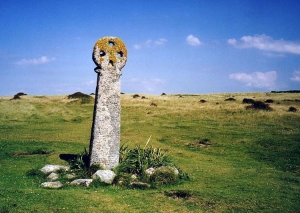
This 'lost oratory' was the site of a 6th century early Christian church established by St. Piran, an Irish missionary who was the patron saint of tinners, and the most important saint in Cornwall. It lies a few hundred yards west of the ancient cross that also bears his name,
In the wide expanse of Penhale Sands. South of this area is Gear Sands upon which Perran Sands Holiday Park has been built. A little further south still is the popular holiday resort of Perranporth.
Because of constant erosion by wind and sand the remains of the building have been buried to protect it. The mound is now topped with a smallish granite stone and a plaque which reads:
"This stone is dedicated to the glory of God and in memory of St. Piran, Irish missionary and Patron Saint of Tinners, who came to Cornwall in 6th Century.
Beneath this stone is buried the Oratory which bears his name. Erected on the site hallowed by his prayers.
October 1980."
It is certainly worth the walk, and after finding it, and contemplating for a while what it might have once looked like, you can climb the high nearby sand-dune to stand under the huge modern cross that can be seen for miles around, and survey the whole sandy wildlife reserve .
Tintagel Castle
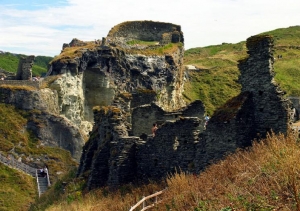
For a magical day out take the family to Tintagel Castle.
Its wonderful location, set high on the rugged North Cornwall coast, offers dramatic views, and its fascinating ruins and stunning beach cafe make it a perfect day trip.
Throughout the year, a packed events programme provides great family fun including Tales of King Arthur, Castle of Legend and Easter Adventure Quest! Visit http://www.english-heritage.org.uk/daysout/properties/tintagel-castle/events for details.
Tintagel Castle is steeped in legend and mystery; said to be the birthplace of King Arthur, you can still visit nearby Merlin's Cave. The castle also features in the tale of Tristan and Isolde. With a history stretching as far back as the Romans, Tintagel Castle is one of the most iconic visitor attractions in the south west.
The History of Tintagel Castle
Joined to the mainland by a narrow neck of land, Tintagel Island faces the full force of the Atlantic. On the mainland itself, the gaunt remains of the medieval castle represent only one phase in a long history of occupation. Even before Richard, Earl of Cornwall, built his castle in 1233, Tintagel was already associated in legend with the conception of King Arthur by Uther Pendragon, the result of his seduction of Queen Igraine. Indeed Richard's castle was probably deliberately built to reinforce his connections with Arthur and the ancient rulers of Cornwall. This Arthurian connection was later renewed by Alfred, Lord Tennyson, in his Victorian 'Idylls of the King'.
After a period as a Roman settlement and military outpost, Tintagel became a trading settlement of Celtic kings of Cornwall during the 5th and 6th centuries. Legend has it that one of these was King Mark, whose nephew Tristan fell in love with Yseult (or Isolde). Their doomed romance is part of Tintagel's story.
The remains of the 13th century castle are breathtaking. Steep stone steps, stout walls and rugged windswept cliff edges encircle the great hall, where Richard, Earl of Cornwall, once feasted.
Dogs welcome on leads
Minack Theatre
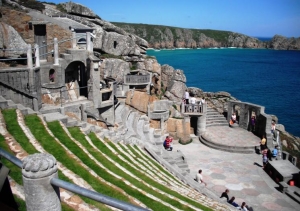
From above it looks as though some wandering Greeks, two thousand years ago, had carved a theatre into the granite cliffs of Porthcurno, Cornwall. In fact, it was just under eighty years ago that there was nothing there except a sloping gully of gorse and heather and below that, the sea of the Atlantic Ocean.
The summer theatre season runs from May to September presenting drama, musicals and opera in this most dramatic of settings. Day visitors can explore this world famous open-air theatre created from a cliffside at Porthcurno by Rowena Cade.
The sub-tropical gardens have become an established favourite, especially for gardeners with a taste for the exotic. The succulent plants thrive on the open cliffside providing an added dash of colour to the Minack all year round.
The Rowena Cade Visitor Centre tells the remarkable story of how a girl from Victorian era Cheltenham grew up to build this internationally famous Theatre with her own hands. Visit during the day, explore and relax in our cafe, overlooking the Theatre and soak up the magic that is Minack
Jamaica Inn
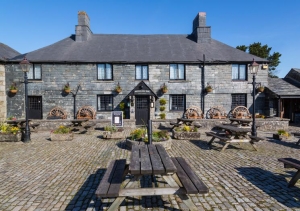
Immortalised in Daphne du Maurier's eponymous tale of smugglers, rogues and pirates, this historic coaching house has welcomed travellers crossing Bodmin Moor for nearly 300 years. Full of legend, mystery, romance and even, according to folklore, the odd friendly spirit, Jamaica Inn is set in one of the most evocative moorland locations in Britain.
The Inn is more than just a stop-off for weary travellers, it’s an ideal base for visiting anywhere in Cornwall or Devon in a day and be back in time for dinner. It is also home to an award-winning restaurant and hotel, great ales in its ‘olde worlde’ bars, souvenir shop and the fascinating Smugglers’ Museum where tales of wreckers, murderers and villains are brought wonderfully to life!
The Smugglers Museum
The Smugglers Museum houses one of the finest collections of smuggling artefacts in the country. Featuring 'The History of Jamaica Inn', an educational and historical theatre show, the Museum brings alive many of the myths and legends associated with Jamaica Inn and Cornwall, including tales of wreckers and smugglers over the past 300 years.
Smuggling evolved when customs dues were first introduced in the thirteenth century, but there was no form of law and order until the fifteenth century and even then it was negligible. Goods such as silks, tea, tobacco and brandy were more frequently smuggled into Cornwall than anywhere else in England.
Cornish smugglers were not a violent breed, but very cunning. A famous eighteenth century economist defined a smuggler as: "A person who, though no doubt highly blameable for violating those of natural justice and who would have been in every respect an excellent citizen, had not the laws of his country made that a crime which nature never meant to be so".
So, smuggling became accepted and most took part in the proceedings - even the revenue men were quite amenable to the odd bribe! Smuggling around the Cornish coast was comparatively simple as there were few men to enforce the law and even when a smuggler was caught, he was usually dealt with leniently by the presiding magistrates, most of whom were willing recipients of the smuggled goods.
Dogs welcome
Eden Project
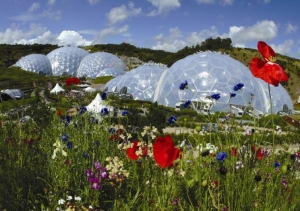
With a worldwide reputation, and recognised by the British Travel Awards as the Best UK Leisure Attraction 4 years running (2014, 2013, 2012 and 2011) and the Silver Award for Best Leisure Attraction in 2016, Eden barely needs an introduction, but this epic destination definitely deserves a day of your undivided attention. More than just a huge, tropical garden, Eden is a gateway into the relationships between plants and people, and a fascinating insight into the story of mankind's dependence on plant life. Not only a mind-blowing visitor attraction, Eden is also fast-becoming a unique resource for education and knowledge towards a sustainable future.
Experience the sights, smells and scale of the rainforests in the Rainforest Biome - the world's largest greenhouse - and discover the tropical plants that are used to produce everyday products. Travel to South Africa and California, as you amble amongst the orange and lemon trees, olive groves and gnarled vines of the Mediterranean Biome, and in the 30-acre Outdoor Garden see hemp, sunflowers and other plants that could change your future, flourishing under the Cornish sun.
A fascinating location, but, more importantly, Eden is a fun and family-friendly day out. Curious kids can find out where tea, rubber and sugar come from, and travel the world to the simulated environments of tropical destinations that they dream of traveling to in the future. There are themed events according to the seasons, workshops for adults and children, activity days, music concerts and much more besides.
There's no stress about packing up a family survival kit - facilities include on-site restaurants and cafes, gift shops and well equipped child- and baby-friendly toilet facilities. In fact, for a day out you needn't worry about taking much more than yourselves. Eden also offers easy access to wheelchairs and buggies, and dogs on leads are welcome in all the outdoor areas of the site.
Lost Gardens Of Heligan
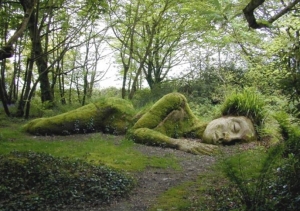
Discover romantic Victorian productive gardens and pleasure grounds along winding paths laid out over two centuries ago. Step back in time and journey across the world beneath the historic rhododendron boughs of Sikkim, beside Maori-carved tree ferns in New Zealand, to explore our Italian Garden and Alpine inspired Ravine.
Get lost in our exotic outdoor Jungle whilst adventuring along raised boardwalks past giant rhubarb, banana plantations and through tunnels of towering bamboo. This exuberant garden hosts a riot of luxuriant foliage, outstanding trees and inspiring views, drawing the imagination on a journey far from our temperate shores.
The Giant’s Head, Mud Maid and Grey Lady all wait to be discovered along the Woodland Walk to delightful bird song. This sheltered path comes to life for children and adults alike as the woodland sculptures reveal themselves, emerging gently from the undergrowth, in a beautiful natural landscape.
Ancient woodlands and grazed pastures are managed to promote wildlife, which is celebrated at our pioneering Wildlife Project, offering an intimate view of native fauna.
The licensed Heligan Tearoom provides a welcoming and relaxed atmosphere for morning coffee, Cornish cream teas and delicious home-cooked lunches, incorporating fresh seasonal produce from the gardens and estate. Our on-site bakery supplies fresh bread, scones and cakes daily. Whilst the Heligan Shop offers quality items, many of which have been designed, made, written or grown by staff on-site, providing an exclusive memento of a visit to the Lost Gardens.
Well-behaved dogs on short leads are welcome to the Gardens all year round.
Bodmin Jail
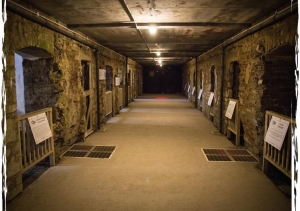
This fascinating building, steeped in both social and architectural history, offers guests an amazing insight into Cornish penal life over the centuries.
Visit the cold dank cells, look up at the thin rays of light filtering through a small barred window and imagine being sentenced to even a week in such desolation, a very lonely life with the knowledge each day would bring more of the same cold, hunger and hard labour on the treadmill as a civil prisoner, or “cannon ball” catch for naval prisoners; designed to keep you fit for battle on your release.
See the only working execution pit in the UK. Discovered during renovation works in 2005, the pit has now been restored to its’ full working order, with the able assistance of Gary Ewart, one of the UK’s leading authorities on hanging.
There is plenty to see, do and learn in this fascinating visitor attraction as well as After Dark events for the hardcore jail visitor. You can even enjoy a tasty meal in the Govenors Hall where they enjoy sourcing local, seasonal, fresh produce from well vetted suppliers, who love their food!
Lanhydrock House and Gardens
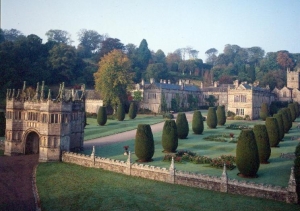
It is the perfect country house and estate, with the feel of a wealthy but unpretentious family home. The kitchens, nurseries and servants' quarters offer a thrilling glimpse into life 'below stairs', while the spacious dining room and bedrooms are truly and deeply elegant.
The house is set in wooded parkland of 1,000 acres and encircled by a garden of rare shrubs and trees.
Follow in the footsteps of generations of the Robartes family, walking in the 17th-century Long Gallery among the rare book collection under the remarkable plasterwork ceiling. After a devastating fire in 1881 the house was refurbished in the high-Victorian style, with the latest mod cons.
Don't miss
* There are 50 rooms to explore – allow plenty of time!
* Play the Steinway piano in the Long Gallery
* Look out for the museum and second-hand bookshop
The gardens
The historical garden with its 30-acres of woodland was laid out back in 1857, but its present format was actually established later on in the Victorian period, and many of the plants are no more than 70 years old. However, a grand atmosphere permeates the entire setting and compliments the brilliant planting of more modern times.
And with so much space to roam, Lanhydrock makes a very family friendly day out. Whilst the fresh air and colourful surroundings will captivate the kids' imaginations and wear them out, the restaurant has a fantastic children's menu and there are excellent baby-changing facilities on-site.